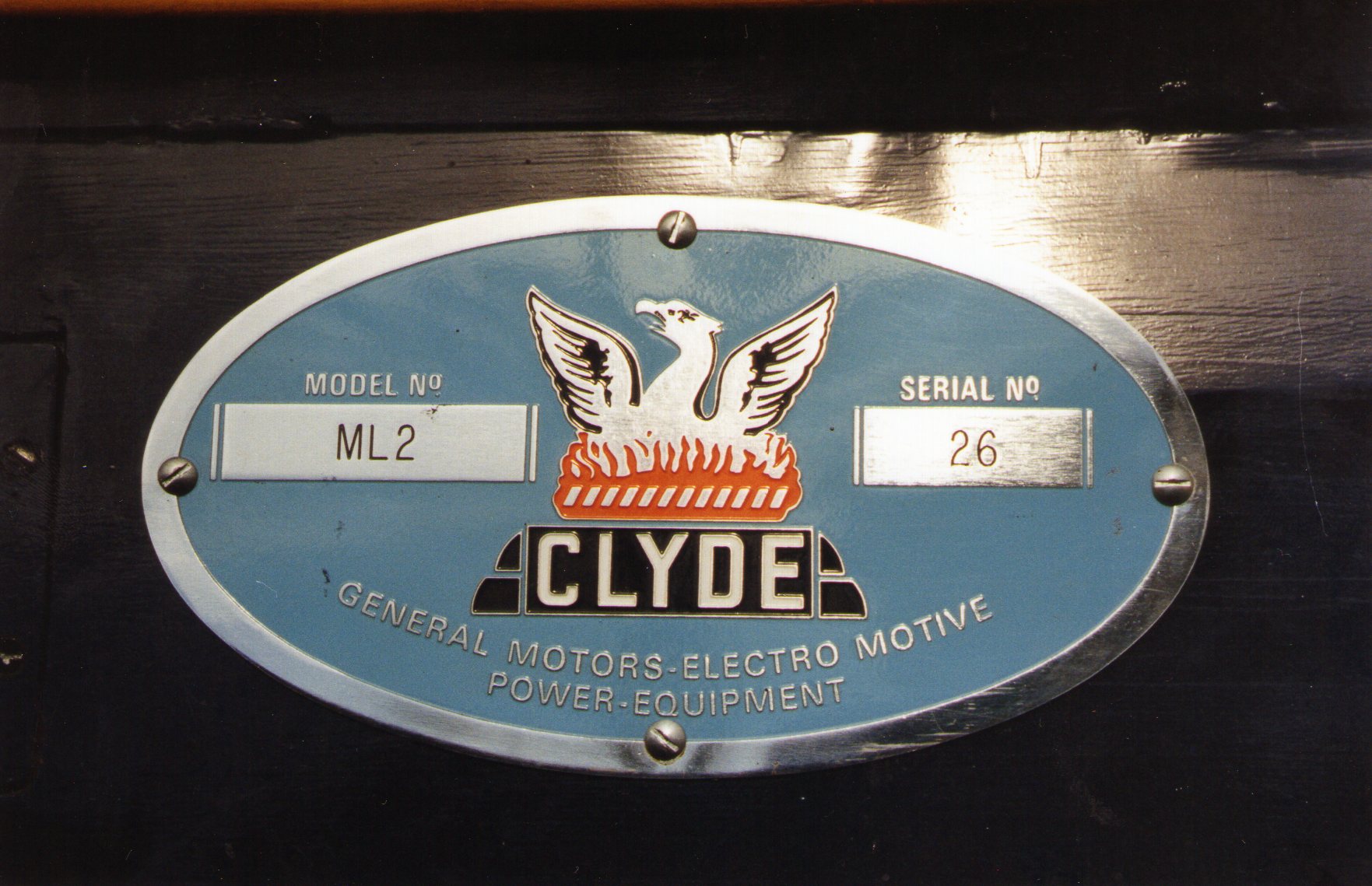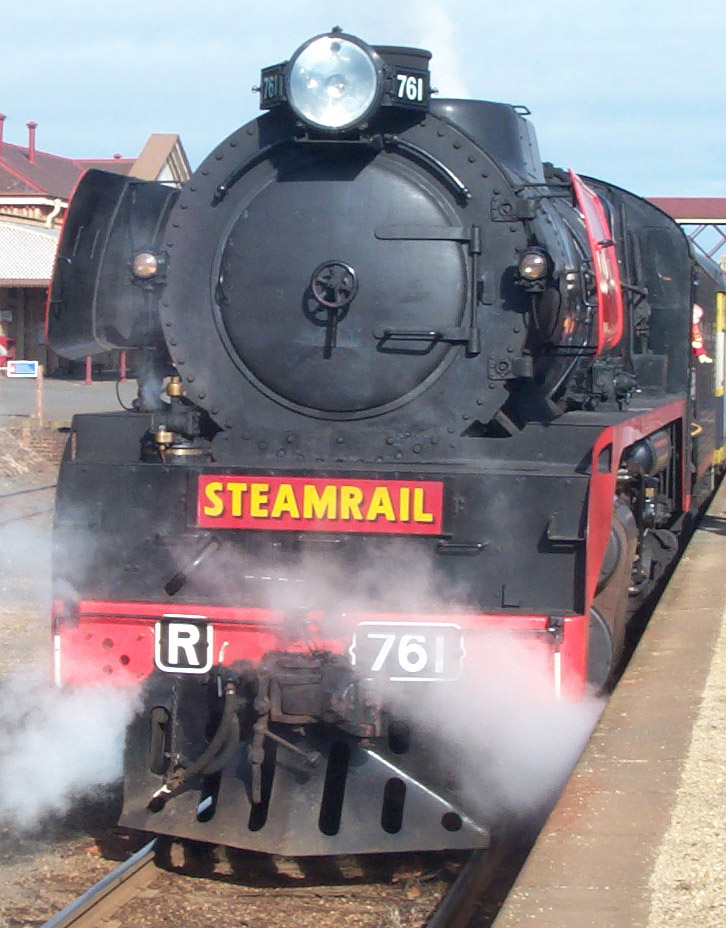|
Ebden Railway Station
Ebden is a closed railway station, located in the town of Ebden, on the Cudgewa line in Victoria, Australia. All buildings were removed after the closure of the line, leaving only the platform mound remaining.Ebden Vicsig History The station opened on 10 September 1889 as Bethanga Road. It was renamed Bethanga on 5 October 1904, and renamed Ebden on 2 May 1910. Ebden, along with other stations along the line, was erected according to the ''Act No. 821'' of the Victorian Parliament in 1884, authorising the building of a branch line from |
Cudgewa Railway Line
The Cudgewa railway line is a closed railway line in the north-east of Victoria, Australia. Branching off the main North East line at Wodonga it ran east to a final terminus at Cudgewa. The High Country Rail Trail now uses most of the railway reserve. History The Cudgewa line opened in stages between 1889 and 1921. The first section from Wodonga to Huon opened on 10 September 1889. It was extended to Bolga on 18 July 1890, Tallangatta on 24 July 1891, Shelley on 13 June 1916 (the highest station in Victoria), Beetoomba on 10 April 1919 and Cudgewa on 5 May 1921. Cudgewa Line Vicsig In 1919, the line was used to carry materials for the construction of Hume Weir, and three years later a spur line connecting Ebden to the weir was opened ... [...More Info...] [...Related Items...] OR: [Wikipedia] [Google] [Baidu] |
Victorian Railways A2 Class
The A2 class was an express passenger locomotive that ran on Victorian Railways from 1907 to 1963. A highly successful design entirely the work of Victorian Railways' own design office, its long service life was repeatedly extended as the Great Depression and later World War II delayed the introduction of more modern and powerful replacement locomotives. History The introduction of the A2 class marked a turning point in Victorian Railways locomotive design, as it was entirely designed by VR engineers of the newly established Locomotive Design Section and the entire class built in-house at Victorian Railways workshops.Pearce et al., p. 12 Production Based on the success of the prototype A2572, a total of 125 Stephenson valve gear A2 locomotives were built between 1907 and 1915. The design was then altered to incorporate larger diameter cylinders, a higher pressure boiler and Walschaerts valve gear, and a further 60 locomotives of that design were produced between 1915 and 1922. ... [...More Info...] [...Related Items...] OR: [Wikipedia] [Google] [Baidu] |
High Country Rail Trail
The High Country Rail Trail is a 35 kilometre, part-gravel part-sealed rail trail on the northern border of Victoria, Australia. It runs along the former Cudgewa railway line from Wodonga, along the edge of Lake Hume, to Shelley railway station in the former township of Shelley, Victoria. The eight kilometre section east from Tallangatta to Old Tallangatta is sealed; the remainining sections are not sealed but are accessible on hybrid, gravel, or mountain bikes. The section from Bullioh to Shelley features a long but gradual climb, reaching 779 metres of altitude at Shelley. The climb features easy grades of 2-3%. The rail trail features extensive views of Lake Hume from Wodonga to Tallangatta, and several historic trestle bridges on the climb to Shelley. However, there are no facilities available from Tallangatta to Koetong; riders will need to be prepared with sufficient food and water. There are plans to eventually extend the trail as far as Cudgewa near Corryong C ... [...More Info...] [...Related Items...] OR: [Wikipedia] [Google] [Baidu] |
Wodonga
Wodonga (Pallanganmiddang language, Waywurru: ''Wordonga'') is a city on the Victoria (Australia), Victorian side of the border with New South Wales, north-east of Melbourne, Australia. It is located wholly within the boundaries of the City of Wodonga Local government area, LGA. Its population is approximately 35,100 and is separated from its twin city in New South Wales, Albury, by the Murray River. Together, Albury–Wodonga, the two cities form an urban area with an estimated population of 93,603. Estimated resident population, 30 June 2018. History Founded as a customs post with its twin city Albury on the other side of the Murray River, the town grew subsequent to the opening of the first bridge across the Murray in 1860. Originally named Wodonga, its name was changed to Belvoir then later back to Wodonga. The Post Office opened 1 June 1856 although known as Belvoir until 26 July 1869. It had previously been regarded as the smaller, less prosperous cousin of the two. Whil ... [...More Info...] [...Related Items...] OR: [Wikipedia] [Google] [Baidu] |
Apex Clubs Of Australia
The Association of Apex Clubs of Australia is an Australia-wide association of autonomous clubs dedicated to fellowship, self-improvement, and community service, similar to other service clubs such as Lions International but with a younger membership (18–40). Apex organizes a range of activities such as public speaking and debating competitions, ute musters, and B&S balls. Members call themselves "Apexians". History Apex had its beginnings in Geelong, Victoria in December 1930 with the formation of the "Geelong Young Business Men's Club" by architects Ewen Laird, Langham Proud and John Buchan with the support of the local chapter of Rotary International, the mayor of Geelong, and the ''Geelong Advertiser''. Although Rotary has no formal connection with Apex, it figures in the club's formation, as Buchan's father was a Rotarian, and the three friends might have joined but for that organisation's rule of no two members in the same profession. This was the time of the Gre ... [...More Info...] [...Related Items...] OR: [Wikipedia] [Google] [Baidu] |
Victorian Railways T Class
The T class are a class of diesel locomotives built by Clyde Engineering, Granville for the Victorian Railways between 1955 and 1968. History In July 1954, the Victorian Railways placed an order with Clyde Engineering for 25 (later extended to 27) diesel electric Electro-Motive Diesel G8 locomotives to partially dieselise country branch lines.1st Order (27 locos): T320-T346 & T413 (1 loco) Mark Bau's VR website In June 1959, the first of an additional ten entered service. Although mechanically similar to the first batch, they differed by having a cab raised above the hood line. Mark Bau's VR website A further ten entered service from Dece ... [...More Info...] [...Related Items...] OR: [Wikipedia] [Google] [Baidu] |
Snowy Mountains Scheme
The Snowy Mountains Scheme or Snowy scheme is a hydroelectricity and irrigation complex in south-east Australia. The Scheme consists of sixteen major dams; nine power stations; two pumping stations; and of tunnels, pipelines and aqueducts that were constructed between 1949 and 1974. The Scheme was completed under the supervision of Chief Engineer, Sir William Hudson. It is the largest engineering project undertaken in Australia. The water of the Snowy River and some of its tributaries, much of which formerly flowed southeast onto the river flats of East Gippsland, and into Bass Strait of the Tasman sea, is captured at high elevations and diverted inland to the Murray and Murrumbidgee Rivers irrigation areas. The Scheme includes two major tunnel systems constructed through the continental divide of the Snowy Mountains, known in Australia as the Great Dividing Range. The water falls and travels through large hydro-electric power stations which generate peak-load power for the ... [...More Info...] [...Related Items...] OR: [Wikipedia] [Google] [Baidu] |
Headshunt
A headshunt (or escape track in the United States) is a short length of track provided to release locomotives at terminal platforms, or to allow shunting to take place clear of main lines. Terminal headshunt A 'terminal headshunt' is a short length of track that allows a locomotive to uncouple from its train, move forward, and then run back past it on a parallel track. Such headshunts are typically installed at a terminal station to allow the locomotive of an arriving train to move to the opposite end of (in railway parlance, 'run around') its train so that it can then haul the same train out of the station in the other direction (assuming, of course, that it is a locomotive equipped to run in either direction; for locomotives that only operate in one direction, a wye or turntable needs to be provided to physically turn the engine around, as well as a run-around track). Reversing headshunt Found primarily on metro systems, rapid transit light rail networks, and tramways, a ... [...More Info...] [...Related Items...] OR: [Wikipedia] [Google] [Baidu] |
Bonegilla Railway Station
Bonegilla was a railway station located in the town of Bonegilla, on the Cudgewa railway line in Victoria, Australia Australia, officially the Commonwealth of Australia, is a Sovereign state, sovereign country comprising the mainland of the Australia (continent), Australian continent, the island of Tasmania, and numerous List of islands of Australia, sma .... The platform has been restored as part of the Rail Trail. Disused railway stations in Victoria (state) {{VictoriaAU-railstation-stub ... [...More Info...] [...Related Items...] OR: [Wikipedia] [Google] [Baidu] |
Victorian Railways B Class (diesel)
The B class are a class of diesel locomotives built by Clyde Engineering, Granville for the Victorian Railways in 1952–1953. Ordered and operated by the Victorian Railways, they initiated the dieselisation of the system and saw use on both passenger and freight services, with many remaining in service today, both in preserved and revenue service. Some were rebuilt as the V/Line A class, while others have been scrapped. History The B class were the first mainline diesel locomotives built for the Victorian Railways. The design was based on the successful Electro-Motive Diesel F-unit locomotives with the distinctive bulldog nose. They were unusual in having a streamlined drivers cab at each end. Inception After World War II, the Victorian Railways was run down from years of Depression-era under-investment and wartime over-utilisation. Chief Mechanical Engineer Ahlston traveled the world studying railway rehabilitation. Britain leaned towards steam locomotives, while France ... [...More Info...] [...Related Items...] OR: [Wikipedia] [Google] [Baidu] |
Victorian Railways R Class
The R class was an express passenger steam locomotive that ran on Australia's Victorian Railways (VR) from 1951 to 1974. A long overdue replacement for the 1907-era A2 class 4-6-0, their development and construction was repeatedly delayed due to financial constraints caused by the Great Depression and later the manpower and materials shortages of World War II and the immediate postwar period. Orders eventually totalling 70 locomotives were placed with the North British Locomotive Company of Glasgow. Once initial teething problems were overcome, R class locomotives proved to be a success and their power and speed enabled faster timetabled services. However, they were almost immediately superseded by mainline diesel-electric and electric locomotives on the Victorian Railways from 1952 onwards. With successive orders of diesel-electric locomotives through the 1950s and 1960s gradually displacing them, all but seven of the class were withdrawn and cut up for scrap. Four of the rema ... [...More Info...] [...Related Items...] OR: [Wikipedia] [Google] [Baidu] |
Immigration
Immigration is the international movement of people to a destination country of which they are not natives or where they do not possess citizenship in order to settle as permanent residents or naturalized citizens. Commuters, tourists, and other short-term stays in a destination country do not fall under the definition of immigration or migration; seasonal labour immigration is sometimes included, however. As for economic effects, research suggests that migration is beneficial both to the receiving and sending countries. Research, with few exceptions, finds that immigration on average has positive economic effects on the native population, but is mixed as to whether low-skilled immigration adversely affects low-skilled natives. Studies show that the elimination of barriers to migration would have profound effects on world GDP, with estimates of gains ranging between 67 and 147 percent for the scenarios in which 37 to 53 percent of the developing countries' workers migrate ... [...More Info...] [...Related Items...] OR: [Wikipedia] [Google] [Baidu] |







